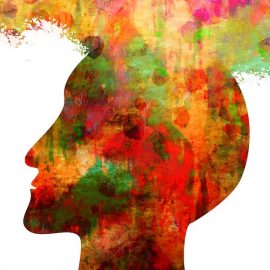

This article is an excerpt from the Shortform book guide to "NeuroTribes" by Steve Silberman. Shortform has the world's best summaries and analyses of books you should be reading.
Like this article? Sign up for a free trial here.
What are sensory processing issues? Why do many autistic people rely on routines? What is stimming?
In his book NeuroTribes, Steve Silberman notes two major differences in the neural functioning of autistic people versus allistic people, specifically in terms of processing sensory input and self-regulation.
Continue reading to learn how autistic people’s brains process stimuli differently.
Processing Sensory Stimuli
Silberman explains that autistic people’s brains tend to process stimuli differently than allistic people, which is why they often have sensory processing issues. They often have extreme sensory sensitivities, as well as a much lower threshold for the sensory input they can handle without becoming overwhelmed. As a result, they find ways of regulating their brains to avoid sensory overload. For example, an autistic person attending a party might need to take a break and go sit alone in a quiet room for a while to keep their system from becoming overloaded, whereas an allistic person might not have trouble handling that much sensory input.
(Shortform note: While Silberman focuses largely on oversensitivity to stimuli, autistic people can also experience undersensitivity. For instance, they may have poor depth perception (visual undersensitivity) or an unusually high pain tolerance (tactile undersensitivity). While oversensitivity often results in sensory-avoidant behavior, like covering one’s ears or not wanting to be touched, undersensitivity can result in sensory-seeking behavior, like banging objects to make noise or lying under heavy objects like weighted blankets. A person isn’t necessarily “oversensitive” or “undersensitive”; rather, they may experience both oversensitivity and undersensitivity in different environments and to varying degrees.)
Methods of Self-Regulation
To manage the sensory input they receive, autistic people often rely heavily on routines. For example, they may eat the same food for every meal or wear the same clothes every day to avoid overstimulation from unfamiliar tastes or fabric textures. Interruptions to their routines or changes in familiar environments are often distressing.
(Shortform note: Besides helping autistic people avoid unexpected sensory input, routines help reduce the cognitive load (mental effort) involved in getting through each day by reducing the need to weigh options, predict outcomes, and make decisions. However, experts note that routines imposed by others, compared to routines that autistic people develop for themselves, can be distressing, as they interfere with their sense of control and autonomy.)
Autistic people also often engage in repetitive movements or behaviors—called “stimming,” short for self-stimulatory behavior. Stimming can include rocking back and forth, flapping their hands, echolalia, or holding or playing with a specific object. According to Silberman, autistic people stim for many reasons, including to reduce anxiety; to express different emotions like happiness, boredom, and frustration; or simply because it feels good.
(Shortform note: Stimming encompasses a wide range of behaviors beyond those described by Silberman, including cracking one’s knuckles, staring into space, and listening to the same song on repeat. In addition to the benefits Silberman describes, stimming can help a person focus and block out distractions. It can also help someone communicate things they have trouble putting into words—for example, it can be an early indicator that an autistic person is feeling anxious and needs some support.)

———End of Preview———
Like what you just read? Read the rest of the world's best book summary and analysis of Steve Silberman's "NeuroTribes" at Shortform.
Here's what you'll find in our full NeuroTribes summary:
- The truth behind the common misconceptions about autism
- How society’s perception of autism has evolved since the 1930s
- The most effective treatments for autism spectrum disorder






